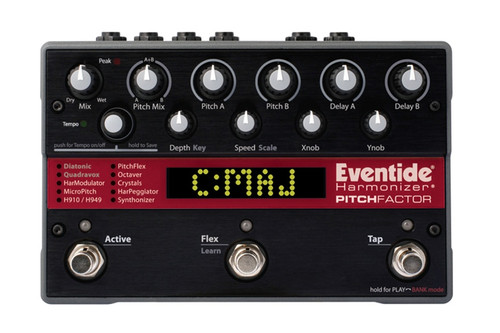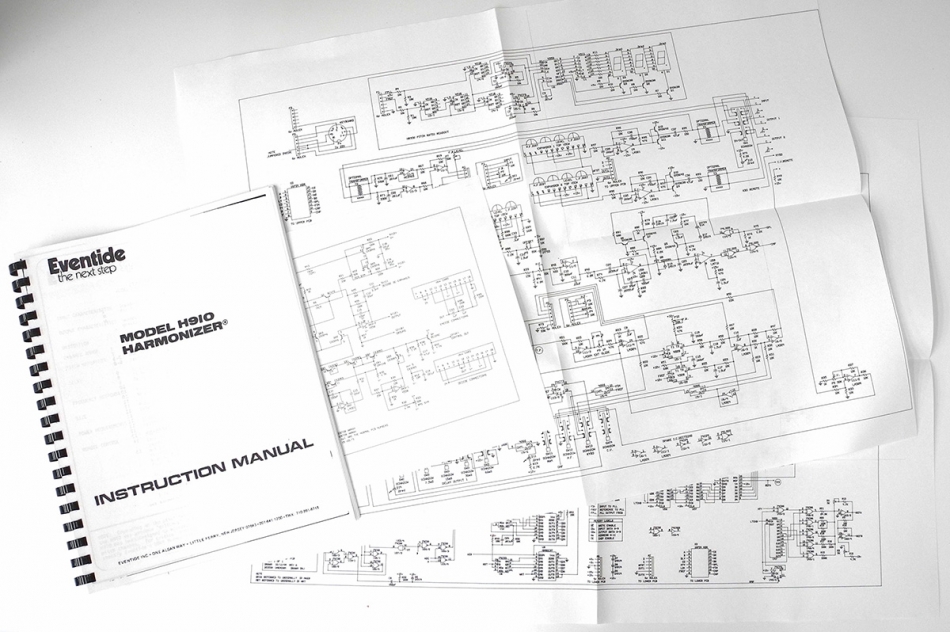

Delay A & Delay B are quantized to note durations.

The maximum amount of delay in Time Mode is 3 seconds.
#Eventide h910 manual manual
If you nd the need to get more information from us than this manual can provide, please visit our support forum available via our website ( http: //). Eventide H910 Manual-Final Tapping sets Delay A & Delay B in seconds.
#Eventide h910 manual software
This helps us keep you informed of any important software updates, and any special o ers that may only be available to registered users. We'll get into more depth on the product soon but, before you forget, please take a few minutes to register online. This package includes a stunning recreation of the H910 Harmonizer, as well as a Dual H910 version, which recreates the popular technique of running two H910 units in parallel to create lush doubling and other interesting e ects. For over 40 years, innovative products like these have made Eventide an industry leader, and we are extremely proud that they continue to be in demand today.
#Eventide h910 manual professional
The product recreated in this plug-in was among the rst introduced by Eventide - and among the world's rst commercially available professional recording products. Thank you for your purchase of the Eventide H910 Harmonizer plug-in. Playing the Harmonizers with a MIDI Keyboard. Registration, Activation, and Installation Eventide was one of the first companies to manufacture digital audio processors, and its products are mainstays in. Use a 10K Linear device.About This Product. is an audio, broadcast and communications company in the United States whose audio division manufactures digital audio processors, DSP software, and guitar effects. When using a potentiometer, the wiper should be connected to “C.V.” and the ends of the track between “+” and “G”. Although the open circuit voltage of this terminal is around 15V, it is from a relatively high impedance source and will usually supply less than 10V when connected to C.V. This is available at the “+” terminal on the rear of the unit. The safest way is to utilise the voltage output from the H910 itself.

Typically, a pitch change ratio of 0.50 to 2.00 will require an input from +1.2V to +9.4V but take care not to exceed +15V or the H910 may be damaged. Because this is an analogue control, there will be variations from device to device. The pitch range is the same as when using the front panel Manual pitch control. Because it is an analogue control, it is less precise than using a controlled frequency source but it enables the Pitch control to be brought out to a location remote from the H910 and could be a hand operated potentiometer, a foot pedal, or even a control voltage output from a synthesiser. The pitch change will now follow the voltage input. Press the “CV” button on the front panel. To use CV mode, connect a voltage source between the Ground terminal (G) and the C.V. It is also unlikely to work with CV out from the average synth, and we definitely can’t answer questions about particular set ups – you’ll need to read the info here and do your own experiments… Virtually any waveshape will do, but it should be symmetrical such as a sine or square wave.Īn alternative method to vary the pitch externally is by using the Control Voltage mode. Note that CV is not suited to pitch-perfect applications but can be great for pedals. If you are not lucky enough to own one of the very rare HK940 keyboard controllers, you can still control the pitch change by applying a variable frequency with an amplitude of 5V peak to peak to the “KYBD” terminal at the rear of the H910 using the “G” terminal as the ground. Therefore playing a note will allow you to transpose the input audio by the number of semitones selected by the note. Each other note represents a pitch shift equal to that number of semitones away from the middle C. The high C represents a pitch ratio of 2.0 representing a pitch shift of 1 octave up. The middle C represents a pitch ratio of 1.0 (unison). The low C represents a PITCH RATIO of 0.5 in other words, a pitch shift of 1 octave down. This is a two octave piano style keyboard. It is designed to work with the HK940 keyboard controller accessory. Keyboard Mode is selected by pressing the “KYBD” button on the front panel. You can’t, except for the method detailed below, which is not suitable for most synths. Please don’t send us “can I connect my… keyboard/synth?” questions. PitchControl Select Thefourswitchesinthisgroupallowyoutoselectwhether the pitch change is set by the manual knob (MAN), the anti-feedbackoscillator(A-F. IMPORTANT: we want to make it clear that “Keyboard” mode does not mean you can just plug in a synth/keyboard – that’s actually kind of a red herring as it only refers to the Eventide control keyboard which had a unique design.


 0 kommentar(er)
0 kommentar(er)
